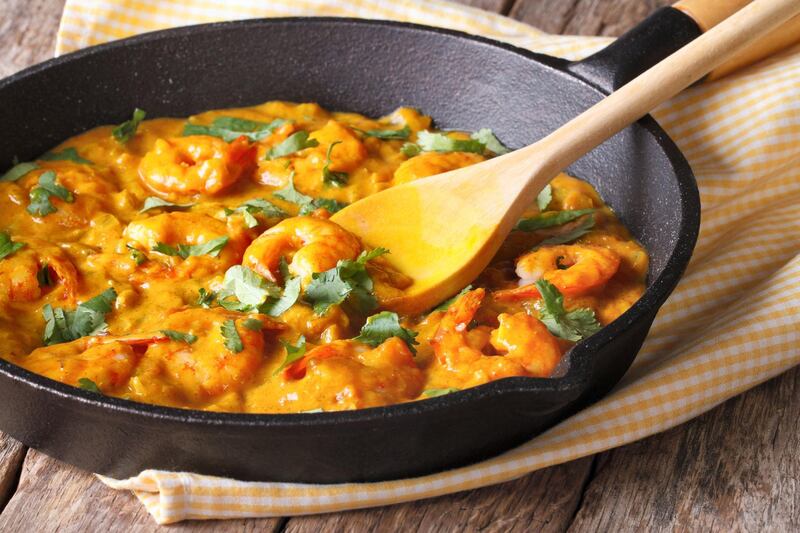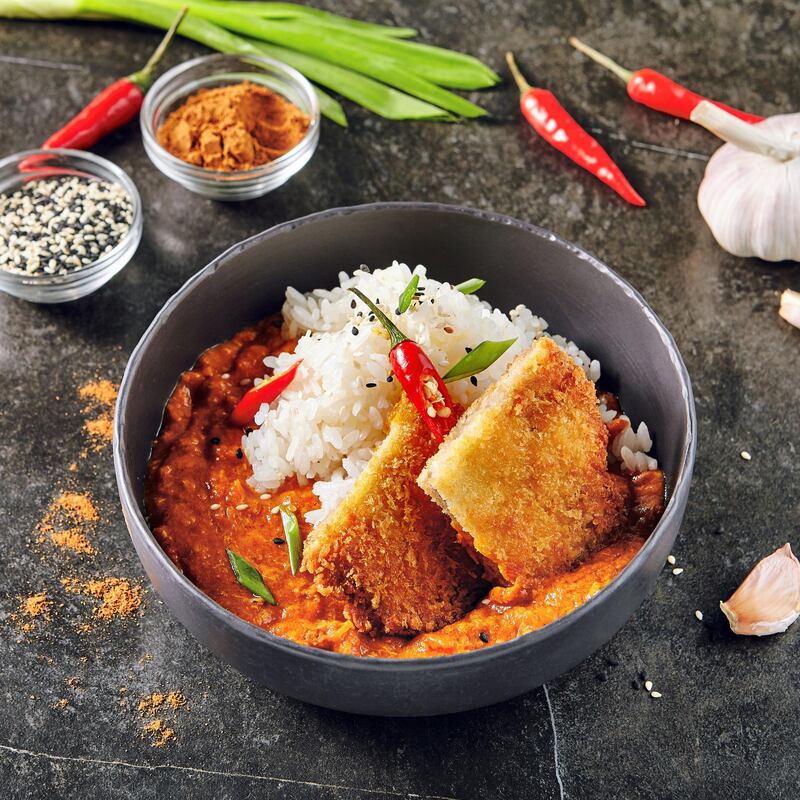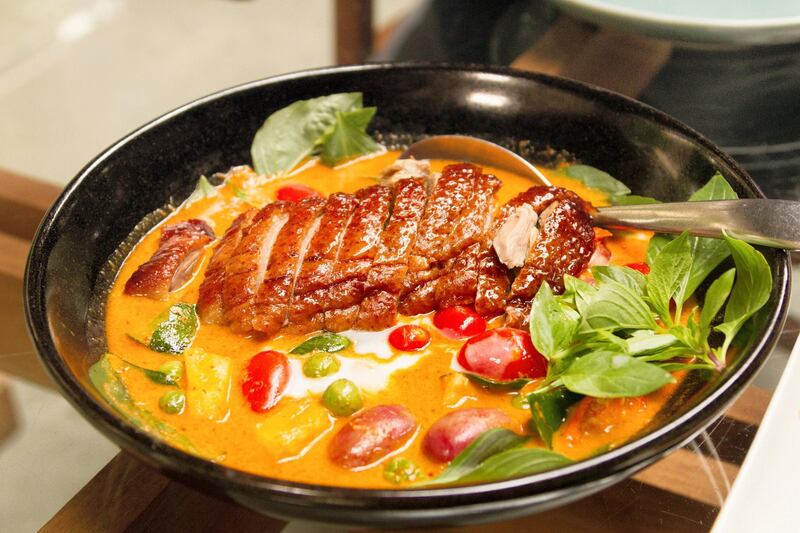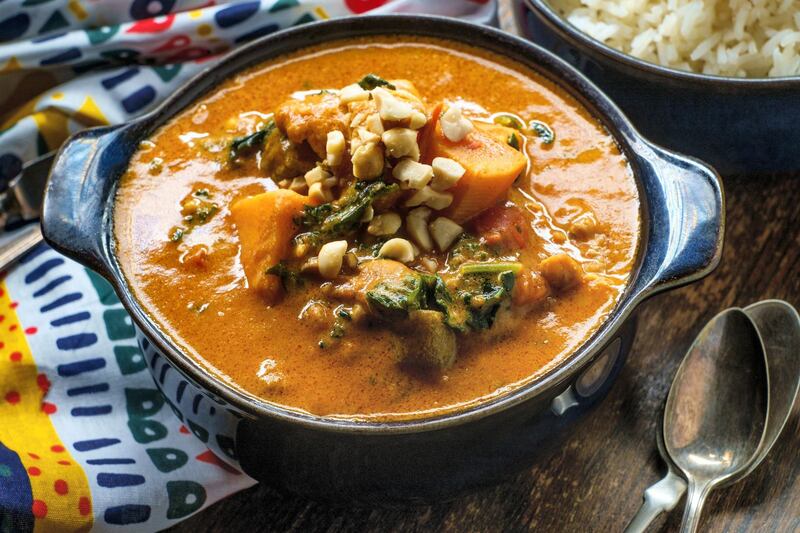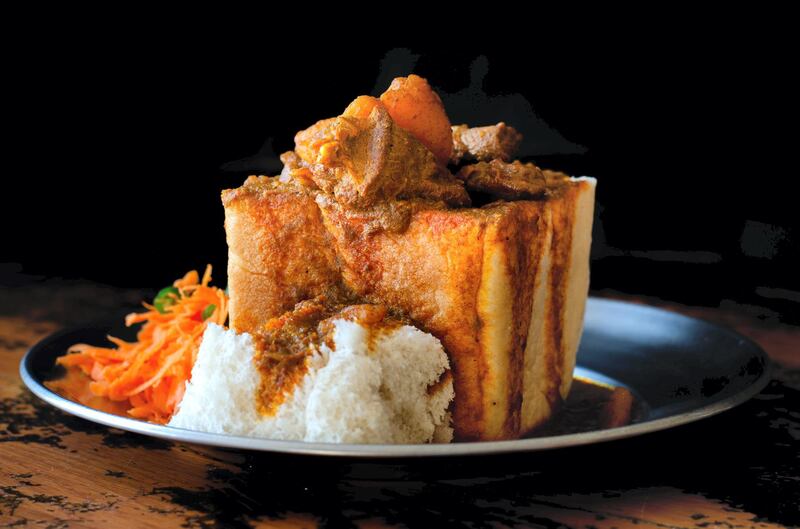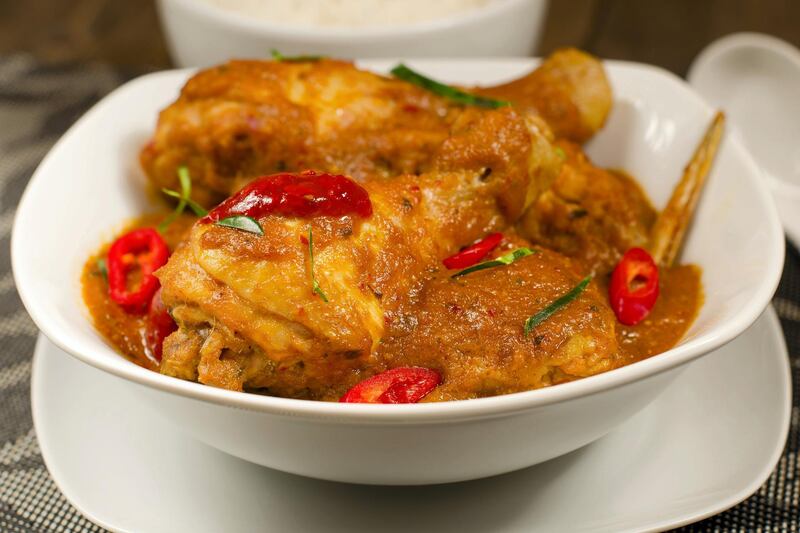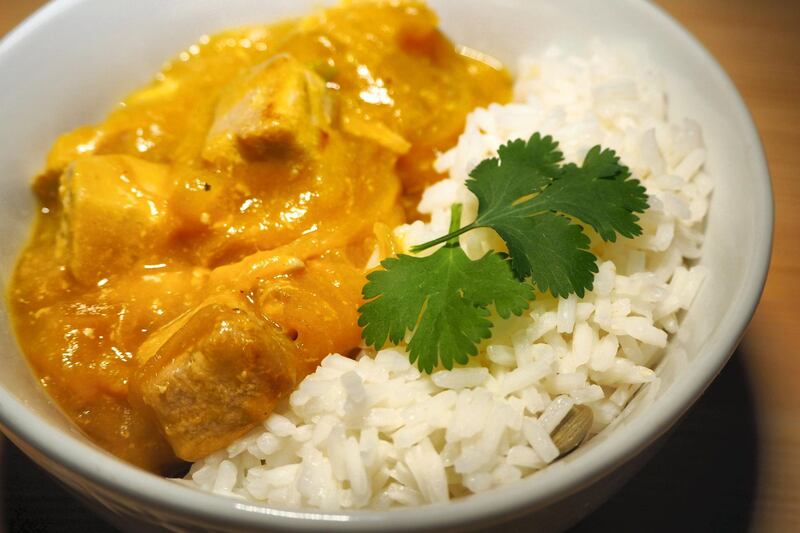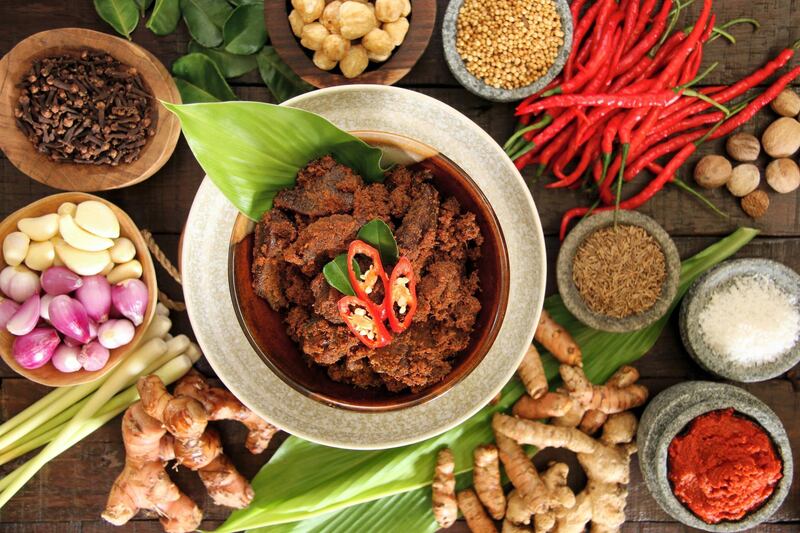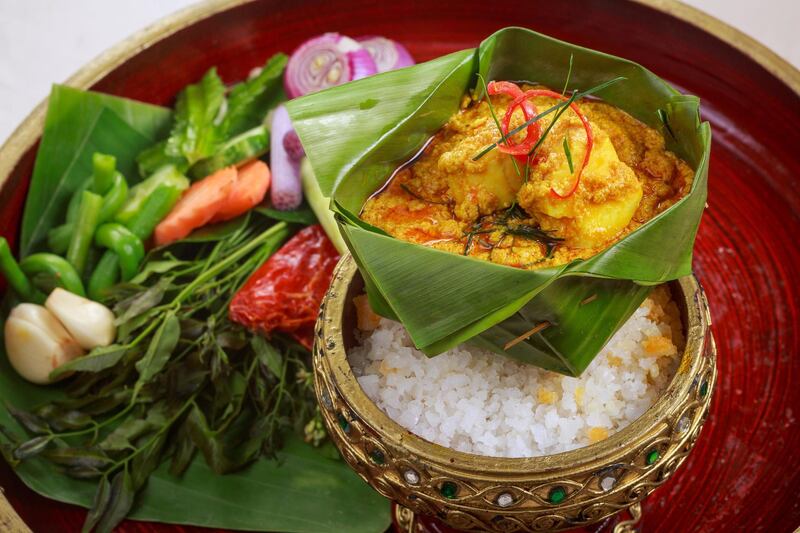Let's clear the air about curry: it is not a single dish. It is characterised by spices, but is not always spicy. And it smells … good. So says Sandeep Ail, executive chef of Abu Dhabi's popular fine-dining restaurant Punjab Grill, which is serving a limited-time Curry Around the World menu until November 13.
Through it, Ail wants to take diners on a culinary journey that may have originated in India, but that has influenced nearly every region in the world. “It was travel, the trade route and colonisation that took these dishes and spices to other parts of the world – just as the chillies that go into some curries came to India via the Portuguese – but the hearsay stories of how each dish originated are fascinating,” says Ail, “and to these we have added our own twist.”
Curry does not belong to one country any more
Take the ayam kapitan dish from Malaysia, for instance. Legend has it that a Chinese cook on a British-owned ship in Malaysia learnt the recipe from a Malay lady. Knowing the original dish would be too spicy for the crew, the cook tempered it with coconut curry. So impressed was the ship’s captain that he asked to speak to the startled chef who, upon being questioned as to the contents of the concoction, blurted out in nervousness: “Ayam [chicken], kapitan.” And the name, and its pronunciation, stuck. Punjab Grill’s version marries Indian and Chinese flavours, by cooking the chicken in a tandoor, then stir-frying it with Asian marination.
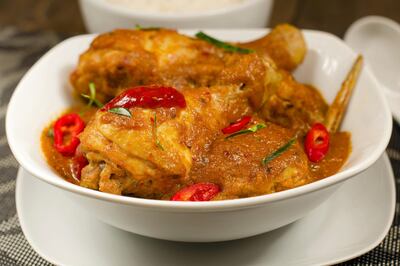
The Cambodian amok seafood, meanwhile, is a curry with French and Indian influences – served as it is with an egg and cream emulsion, in a banana leaf bowl – melded with local flavours such as lemongrass and galangal.
Curry with a twist
Elsewhere on the menu is a Japanese katsu curry, of which Ail says: "While the world is crazy about ramen and sushi, it is curry that many Japanese themselves consider comfort food. Curries were introduced to Japan by [Indian revolutionary] Rash Behari Bose, and what they have now is different from a traditional curry, in that it has a stock-based sauce that can be spicy or even sweet, thanks to the addition of apples and honey."
Chef Ail is full of such interesting trivia, and says he’s curated this 10-dish menu (six of which can be prepared for vegetarians) “using India as the centre point, and then going East and West”. Of course, no reference to a western curry is complete without acknowledging the many British versions. While chicken tikka masala may come to mind first, the Punjab Grill menu offers chicken jalfrezi served in a classic British pie.

“I learnt that jalfrezi was developed by Anglo-Indian cooks, who would use leftover meat from roasts and toss it up with Indian spices. Pies, too, were not traditionally made with prime meats, but with uglier or cheaper cuts, so I decided to combine the two,” says Ail.
Of spices and smells
If there is something that ties all these dishes together, it is the use of spices – from fresh turmeric and cinnamon to green cardamom and galangal. The level of hotness, however, can be turned up or down based on a diner’s taste and tolerance, as is the case with most curries.
Curry also has a bad rep for "the way it smells". Ail says with a laugh: "I cannot dispute that most curries have a strong aroma, and that this may stick to your clothes. But, to me, this is a good smell, a fragrant one. We don't have to rely on the food scent sprays doing the rounds to recreate a sense of smell in a curry. The herbs and spices take care of that."
Kaustubh Mahajan, head of operations at Super Eats Investment, the F&B operators of Punjab Grill, adds: “A strong aroma is a real point of pride. It’s an indicator that the curry is cooking well.”
One of Mahajan’s favourite dishes is also the simplest to make: the Maldivian mango curry with lightly seared sashimi-grade tuna, which looks fancy but is easy enough to recreate in your kitchen. While this and the other nine curries may not be on the restaurant’s permanent menu after November, chef Ail shares two recipes for curryheads to try their hands at, including the most elaborate dish on this menu: the slow-cooked Indonesian beef rendang.
The Curry Around the World menu is available at Punjab Grill at the Ritz-Carlton Grand Canal Abu Dhabi's Venetian Village until Friday, November 13. Dishes are priced between Dh75 and Dh145
Recipes to try
Recipe: Maldivian mango tuna curry
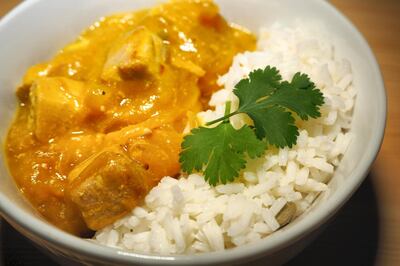
Serves 4
Ingredients
3 tbsp vegetable oil
1 tsp mustard seeds
1 tsp cumin seeds
½ tsp fennel seeds
150g red onion, chopped
10g fresh ginger, grated
5g garlic, chopped fine
2 pods green cardamom, crushed
6 curry leaves, sliced fine
2 pandan leaves
1 tbsp tomato paste
1 tbsp garam masala
2 Thai red chillies, slit
½ cup mango puree
¼ cup coconut milk powder dissolved in ½ cup hot water
2 medium tomatoes, chopped fine
150g x 4 tuna loin
Salt and crushed black pepper, to taste
2 ripe mangoes (about 324g each), peeled, but whole, for garnishing
Method
In a medium sized pot, add the oil. Splutter mustard seed, cumin and fennel.
Add onion, ginger, garlic, cardamom pods, curry leaves and pandan leaves, and saute on medium heat until the onions are lightly browned and fragrant.
Add the tomato paste, give it a stir and mix in well. Then add garam masala, water as desired, tomatoes, chilli, mango puree and salt.
Gently stir the curry, bring to a boil, then reduce heat to medium-low.
Add the coconut milk, gently mix it well, cook for a minute or so. Take off the heat.
Season the tuna loin with salt and pepper. Heat a pan and sear the tuna for 3 minutes each on medium, on both sides. Remove the seared tuna from the pan and rest for a minute before serving with steamed basmati rice and the mango curry, with the whole mango garnish.
Recipe: Indonesian beef rendang curry
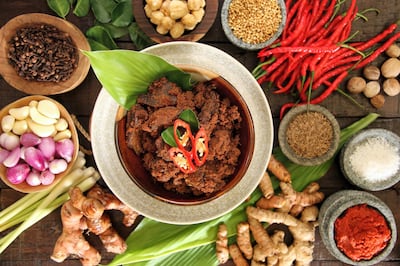
Serves 4
Ingredients for the spice paste
12 Thai chillies
150g red onion, finely chopped
5 garlic pods, minced
3 lemongrass stalks (white part only), sliced
1½ tbsp fresh galangal, finely chopped
1½ tbsp fresh ginger, minced
2 tbsp vegetable oil
Ingredients for the curry
1 tbsp vegetable oil
1kg chuck steak, cubed
Cinnamon stick, 2-inch piece
¼ tsp clove powder
3 star anise
½ tsp green cardamom powder
400ml coconut milk
2 tsp tamarind paste
4 kaffir lime leaves
1/3 cup desiccated coconut powder
1 tbsp palm sugar
1½ tsp salt
Method
Place all the spice paste ingredients in a small food processor and blend to a fine paste.
For the curry, heat 1 tbsp oil in a large heavy-bottom pot over high heat. Add half the beef and brown, then remove on to a plate. Repeat with remaining beef.
On medium low heat, add the spice paste and cook for 2 - 3 minutes until the paste darkens, is aromatic and releases some oil.
Add the remaining curry ingredients and stir to combine.
Bring to simmer, then immediately turn down the heat to low or medium low so the sauce is bubbling gently.
Put the lid on the pot and leave it to simmer for an hour, stirring occasionally. Check the doneness of the beef. If it feels done, turn up heat to medium and reduce the sauce, stirring frequently until the beef browns and the sauce reduces to a paste that coats the beef.
The beef should now be very tender, fall apart at a touch. If not, add a splash of water and keep cooking until it is, then remove from heat and serve with long-grain basmati rice or parathas.
